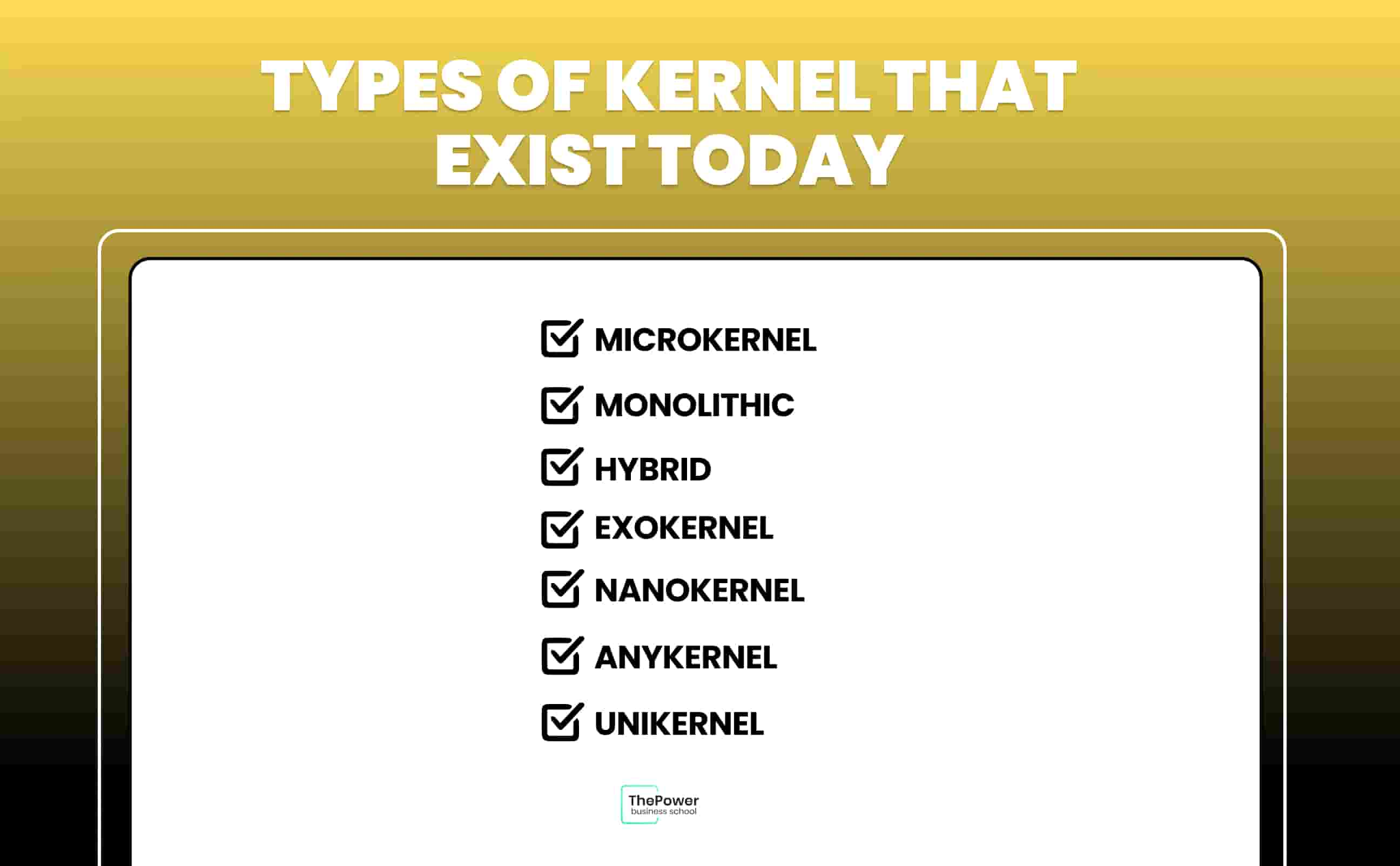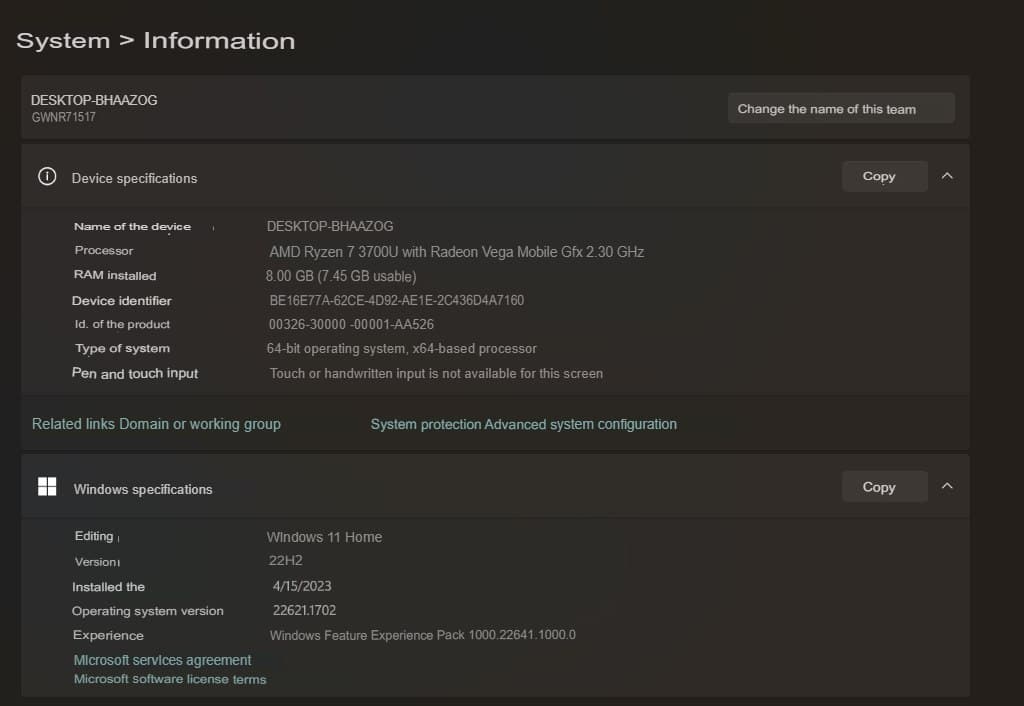What is Kernel in an operating system?
If operating systems didn’t exist, the way we handle technology would be very different, because without them computers and mobile devices would not work properly.
Surely names like Windows, Android, iOS, or Linux will ring a bell, but have you ever wondered what the inner workings of an operating system are like?
Considering the large number of actions and tasks that we can develop, there’s no doubt that the number of internal processes that are developing every second are many.
So, whether you are curious about the subject, or if you’re only just entering the field of programming, you have to know about the internal parts of an operating system and the Kernel is one of them.
We know that for those who are new to this topic, this name may not ring a bell, but we are here to shed light on it and clarify all the doubts you may have.
With nothing more to add, join us to learn more about it.
What is the Kernel?
Of course, for you to understand everything correctly, let’s go step by step.
So to start off on the right foot, the first thing we are going to do is to define what the Kernel is.
And it’s the core of every operating system, this part that allows software access to the hardware and that basically makes it possible to perform all kinds of actions from the devices.
Computers and cell phones always have an operating system, so the Kernel is present in each and every one of them.
Moreover, it’s not an insignificant part. On the contrary, it’s the most important part of any operating system, because without this kernel no device would be usable.
Metaphorically, developers often say that the Kernel is the heart of operating systems, and the truth is that it is.
Therefore, those who are behind the creation of operating systems must know how to handle the Kernel in order to be able to apply it correctly.
What is the Kernel for?
After having a basic idea of what it is, it’s time to explain what it’s used for and how it works internally.
This type of kernel has the initial objective of managing the resources belonging to the hardware that is requested through different types of software.
To better visualize its operation, it could be said that the Kernel works as a kind of intermediary.
It’s in charge of deciding when to grant access to the software in order to better manage the flow of actions that are executed at the same time and prevent everything from overloading or collapsing.
So, without a doubt, the Kernel carries the heaviest workload, since it’s in charge of making everything work correctly.
From the very moment we turn on our computer, the Kernel is working, and it’s also working when we open a program when we request access to the use of peripherals...
That’s why it’s one of the parts that cannot be missing when creating an operating system and it’s of fundamental importance in the chain of command: a computer cannot work without an operating system and an operating system cannot work without a Kernel.
Main functions of the Kernel
To finish understanding how this part of the operating system works, it’s important to talk about its main functions.
It’s true that in general, it’s in charge of coordinating all the communication that software and hardware can have, but how can we understand this better?
Well, thanks to the fact that the Kernel can do this, it becomes completely possible to perform all kinds of actions with today's technological devices.
Now, let's go bit by bit explaining the style of functions that the Kernel has:
Organization function.
Undoubtedly, there are many actions in which the Kernel takes part and the storage and organization of your files is one of them.
When downloading files, images, documents, or whatever, you can be sure that the Kernel is actively working.
Protection function
Since the Kernel is in charge of giving permissions to software to access the hardware, the kernel itself will not accept software of dubious origin.
Therefore, it also plays a protective role that is of great importance for all your devices.
Of course, this does not mean that the Kernel is in charge of protecting us from everything because it doesn’t work that way.
That’s why it’s always advisable to have an antivirus that is updated on all the devices you have.
Optimization fusion
The Kernel is in charge of granting access in an organized way to make the flow of internal processes manageable for your computer.
Otherwise, requests and accesses would be delivered all at once, which would cause a complete collapse of your computer.
Therefore, something as basic as the kernel also interferes with the optimization of the internal processes of these devices.
Peripheral management function
As we mentioned earlier, another of the fundamental functions of the Kernel is that it’s also responsible for managing the peripherals that you connect to your computer.
Remember that for there to be coordination between them and the device to which they’re connected, you must work with the software of each of the peripherals.
So the Kernel is the one in charge of giving hardware access to the software of all the peripherals you have connected.
That is to say, from the mere use of a keyboard to the use of a headset, the Kernel is behind everything making operation possible and above all, correct.
Types of Kernel that exist today
Now, something to take into consideration regarding the Kernel, since we’re talking about it, is that there isn’t only one, but there are several types.
This is because each of these types of kernels is suitable for a specific type of operating system.
As you can imagine, given the variety of devices that exist, there is also a wide range of operating systems. So, depending on their functionalities or what is expected of them, they may have a different Kernel.
That’s why we’re also going to briefly review the types of Kernel that currently exist and their differences:
1. Microkernel
On the one hand, we find the microkernel, which is a small kernel that is responsible for working with a modular structure.
Therefore, in this type of kernel, the subsystems are each in their own module, as opposed to what is common, which is that they are in a single logical module.
It’s for this reason that it’s a type of kernel that is usually used in operating systems that do not need so much performance, so you might find them in very basic or even outdated devices.
2. Monolithic
On the other hand, when we move to the monolithic type, we find a style of the kernel that has a single structure in which all its subsystems coexist in a single logical module.
This is something that allows all the work to be done in one place, so all the tasks of the system will be in a large single kernel.
This is something positive in the programming world, since it allows you to speed up the processes, to have a higher performance, and to reduce the configuration complexity.
It’s worth noting that some of the best-known operating systems in the world today work with a monolithic Kernel.
3. Hybrid
As you can imagine, when we talk about a hybrid kernel, we are talking about a type of kernel in which the two previous types are mixed.
Thus, you have a kernel that will have a microkernel-style structure, while other parts of the code you work with will be found as individual modules.
This is of great help in streamlining all internal processes and the delivery of permissions to the software.
4. Exokernel
While it’s true that the three types of Kernel mentioned above are the most common of all, it’s also true that there are some types that are just as interesting and are mostly more recent.
Among them is the exokernel, which has been presented with a fairly new structure, since it is organized vertically.
In this style, the kernels are smaller and more power is given to the programs used in the computers.
The programs will make decisions about hardware permissions, but they will do this through some libraries.
In this way, the Kernel as such will be relegated to be pending to avoid problems and avoid possible errors in the delivery of permissions.
5. Nanokernel
One of the newest types that haven’t been used so often yet is the nanokernel.
As you can imagine from the prefix used, a nanokernel is even smaller than a microkernel.
Therefore, it has been used only for embedded systems.
6. Anykernel
Continuing with the list of the most current kernel types, we cannot fail to talk about anykernel.
In this case we are dealing with a fairly new type of kernel that seeks to offer a higher level of security, while simplifying the development of certain drivers.
All this by means of a kernel style that is quite similar to the monolithic one.
7. Unikernel
Last but not least, we must also mention the unikernel.
This is a kernel that is currently being used in low-power operating systems, as it has eliminated several layers and simplified the process to the maximum.

How to find out what type of Kernel your computer has?
If after reading so much about the Kernel, you have doubts about what type of operating system kernel your computer has, you can find out in just a few steps.
Here are the steps to follow to find out, if your computer is running Windows:
Press the start button.
Inside the search bar type: About your PC.
Select the option that will appear as a result.
Now, a new window will open in which you will find a variety of information about your PC.
Once you’re there, click on the "Device Specifications" button.
Scroll down the window a little further and click on the "System" option.
There you should see detailed information about your operating system and, therefore, the type of Kernel it has.

Now that you know more about the Kernel, you will notice that it’s a component that is of utmost importance in all the internal processes of operating systems.
Undoubtedly, in front of our eyes, there are a series of processes that we have no idea about, but each one of them is of utmost importance.
As well as the Kernel, there are many other fundamental topics in this area, and in our blog we have information about several of them.
So we invite you to read more of our posts and share what you have just learned with your peers.
14 abr 2025
16 feb 2024
12 dic 2023
1 dic 2023
20 nov 2023
17 nov 2023





